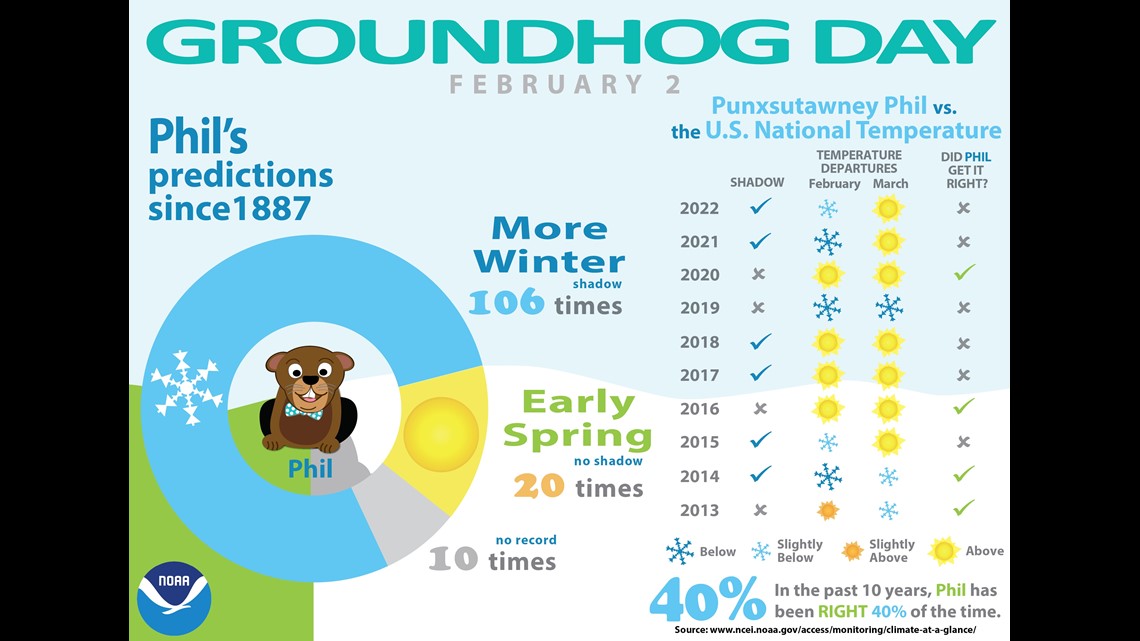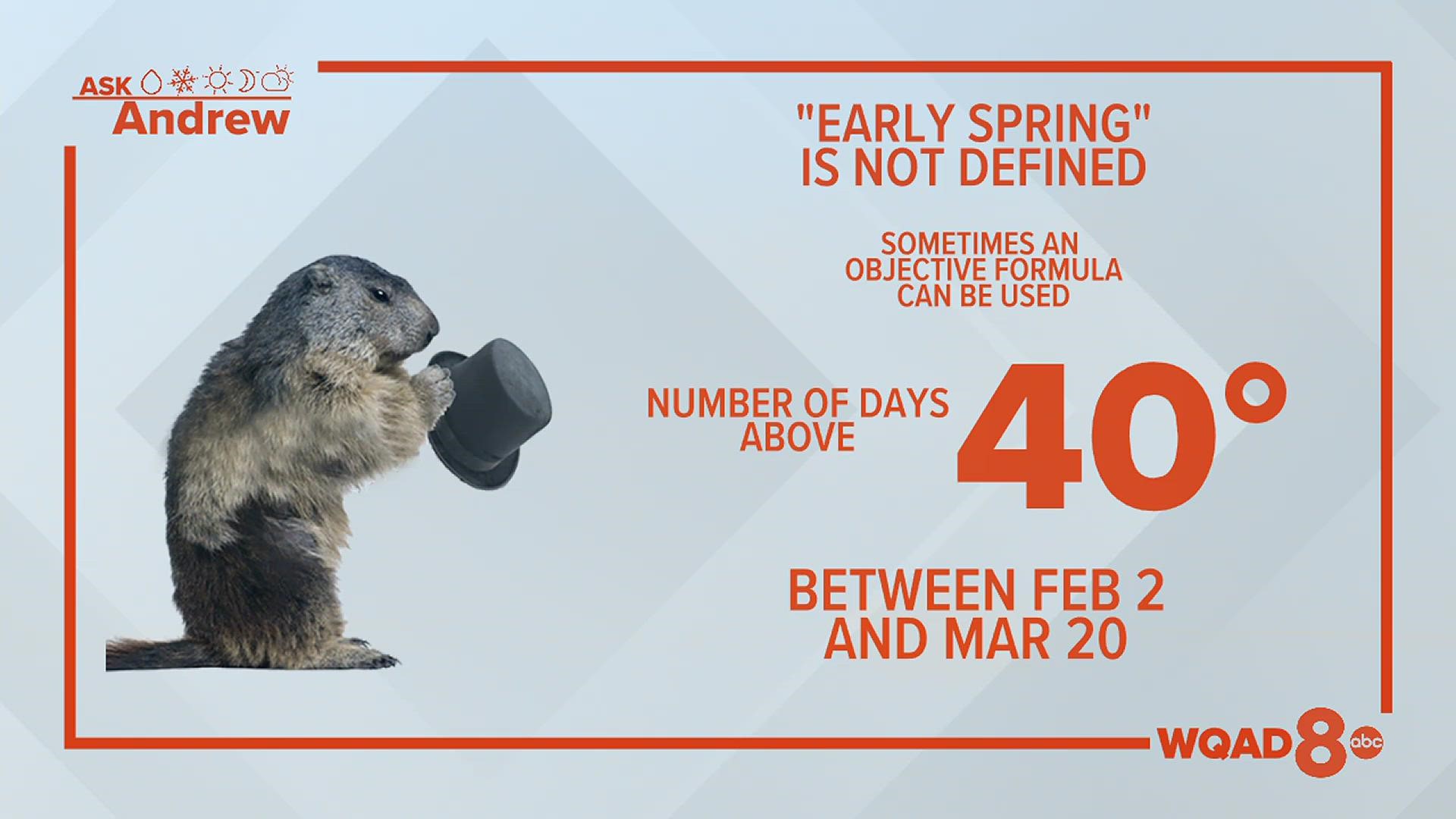MOLINE, Ill. — The infamous Groundhog has spoken! With a shadow seen upon its platform, six more weeks of winter are in store! However, the other alternative outcome doesn't seem to have much clarification regarding what precisely an "early spring" is. This makes for an excellent question submitted by Lori from Sterling.
What is the definition of an early spring used on Groundhog Day?
Going straight to the source, Punxsutawney Phil's website, there seems to be no straightforward definition of what is considered an "early spring." What a cop-out! Right? That's like a meteorologist saying it's going to rain between today and the end of the week, without any further specifics on when exactly the rain is going to start or how much you are going to receive. Blasphemy! I know my inbox would be full if I did that.
One particular groundhog, Staten Island Chuck, uses a formula that makes a bit more sense. In his case, early spring means the majority of the days between Groundhog Day and the spring equinox on March 20 feature temperatures of 40 degrees or above. It would better match the climatology of the region which features average high temperatures rising from the 30s through the 40s during this same period of time.
Several different studies have been done regarding the accuracy of popular Groundhog Day predictions. Overall, the score isn't good, as one can expect. You might as well flip a quarter, as our good friend Dave Levora from Planet 93.9 FM suggests.
NOAA has been keeping track of Punxsutawney Phil for a while and found his accuracy rate is only about 40%.


Have a question that you would like me to answer for an upcoming Ask Andrew segment? Submit it, here!

